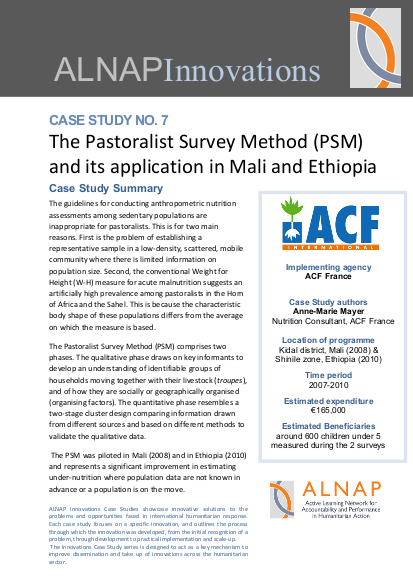The Pastoralist Survey Method (PSM) and its application in Mali and Ethiopia

The guidelines for conducting anthropometric nutrition assessments among sedentary populations are inappropriate for pastoralists. This is for two main reasons. First is the problem of establishing a representative sample in a low-density, scattered, mobile community where there is limited information on population size. Second, the conventional Weight for Height (W-H) measure for acute malnutrition suggests an artificially high prevalence among pastoralists in the Horn of Africa and the Sahel. This is because the characteristic body shape of these populations differs from the average on which the measure is based.
The Pastoralist Survey Method (PSM) comprises two phases. The qualitative phase draws on key informants to develop an understanding of identifiable groups of households moving together with their livestock (troupes), and of how they are socially or geographically organised (organising factors). The quantitative phase resembles a two-stage cluster design comparing information drawn from different sources and based on different methods to validate the qualitative data.
The PSM was piloted in Mali (2008) and in Ethiopia (2010) and represents a significant improvement in estimating under-nutrition where population data are not known in advance or a population is on the move.